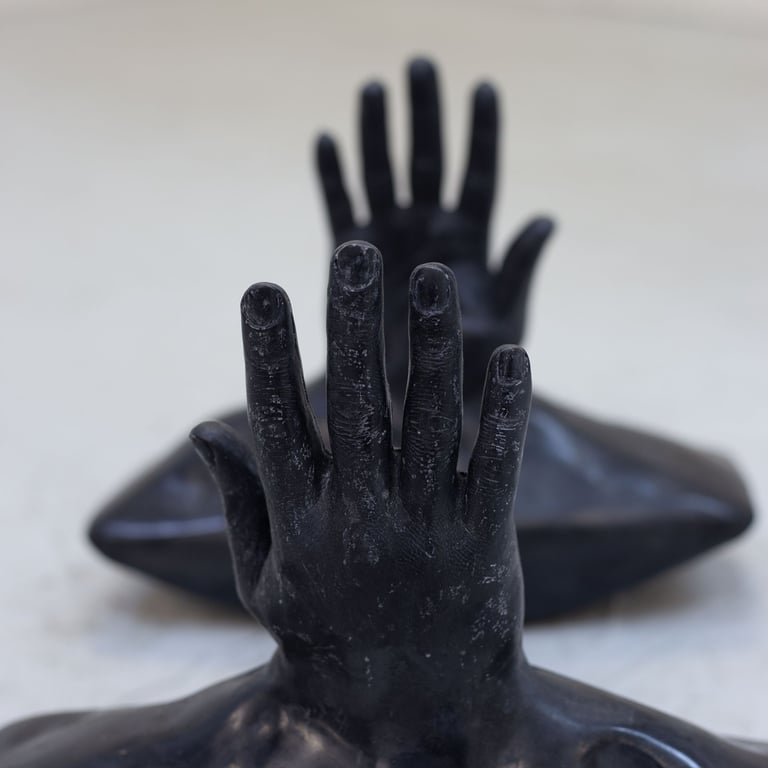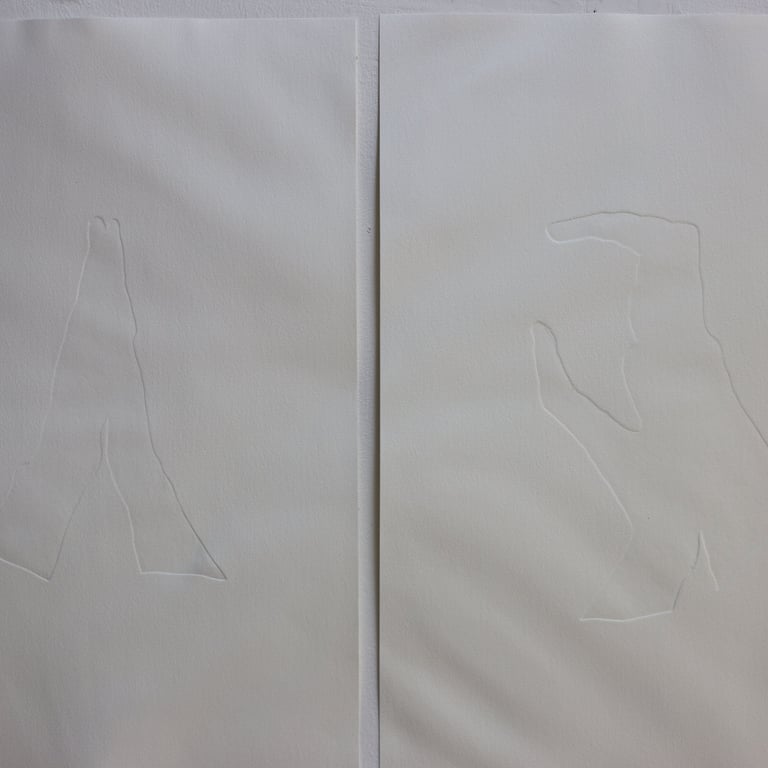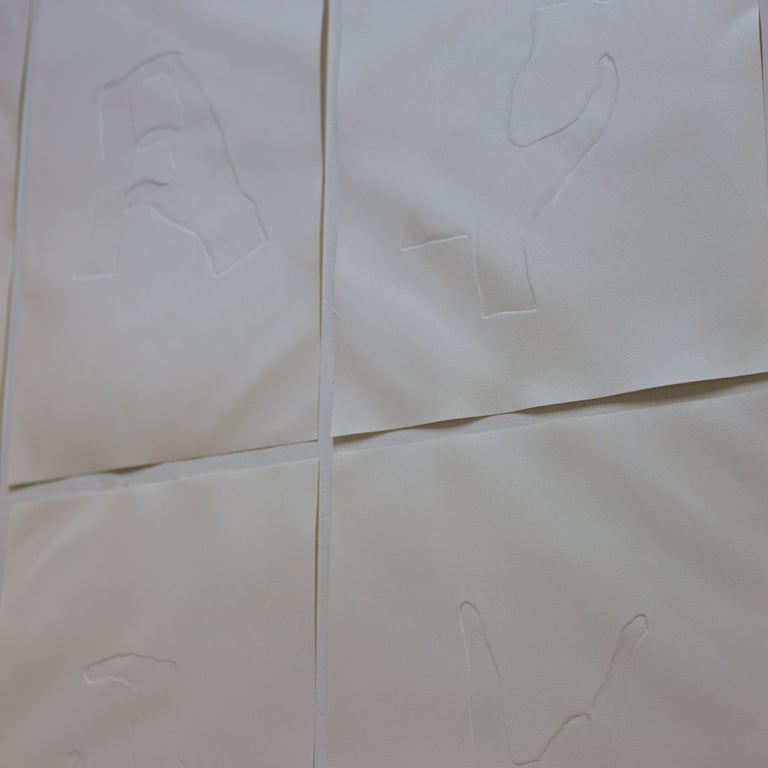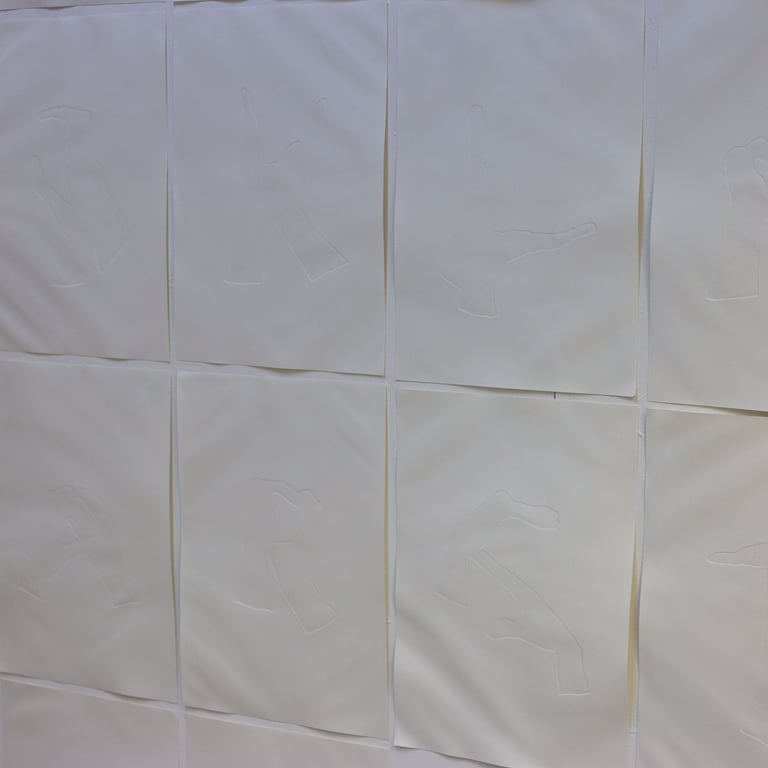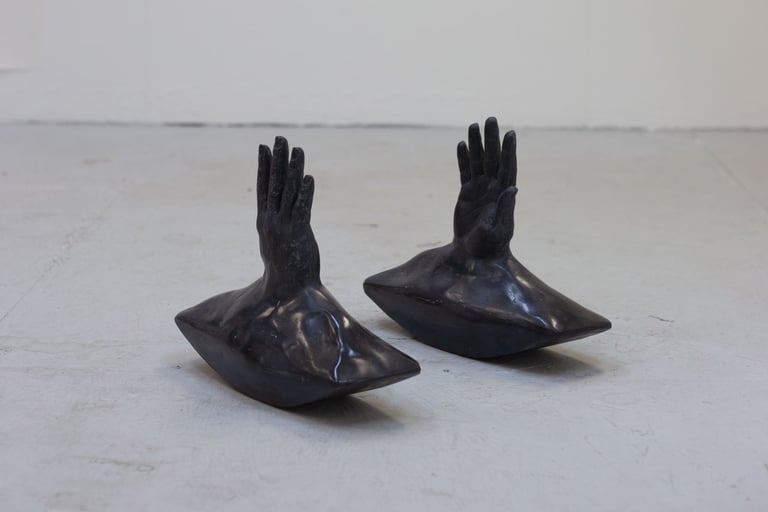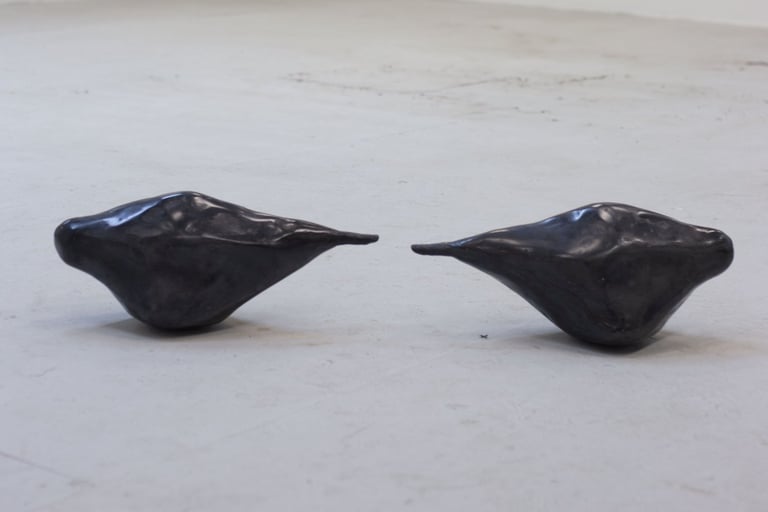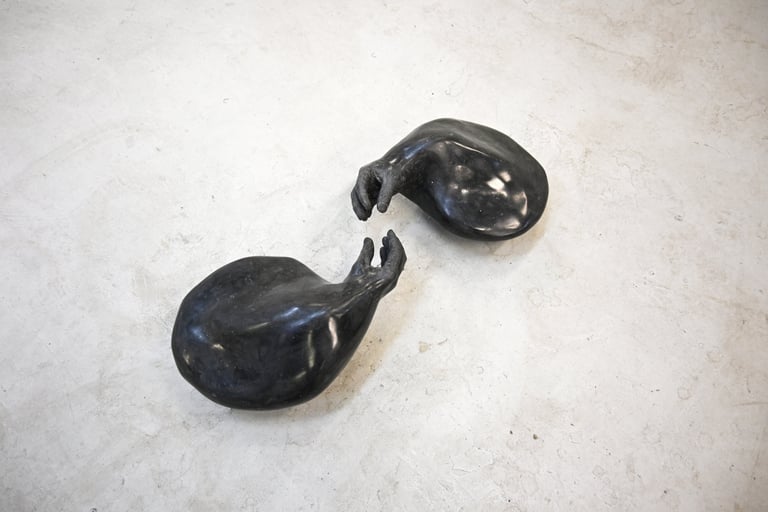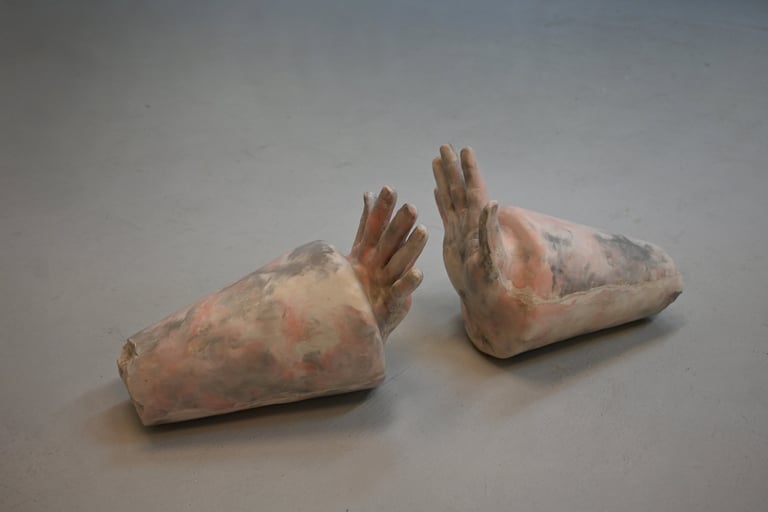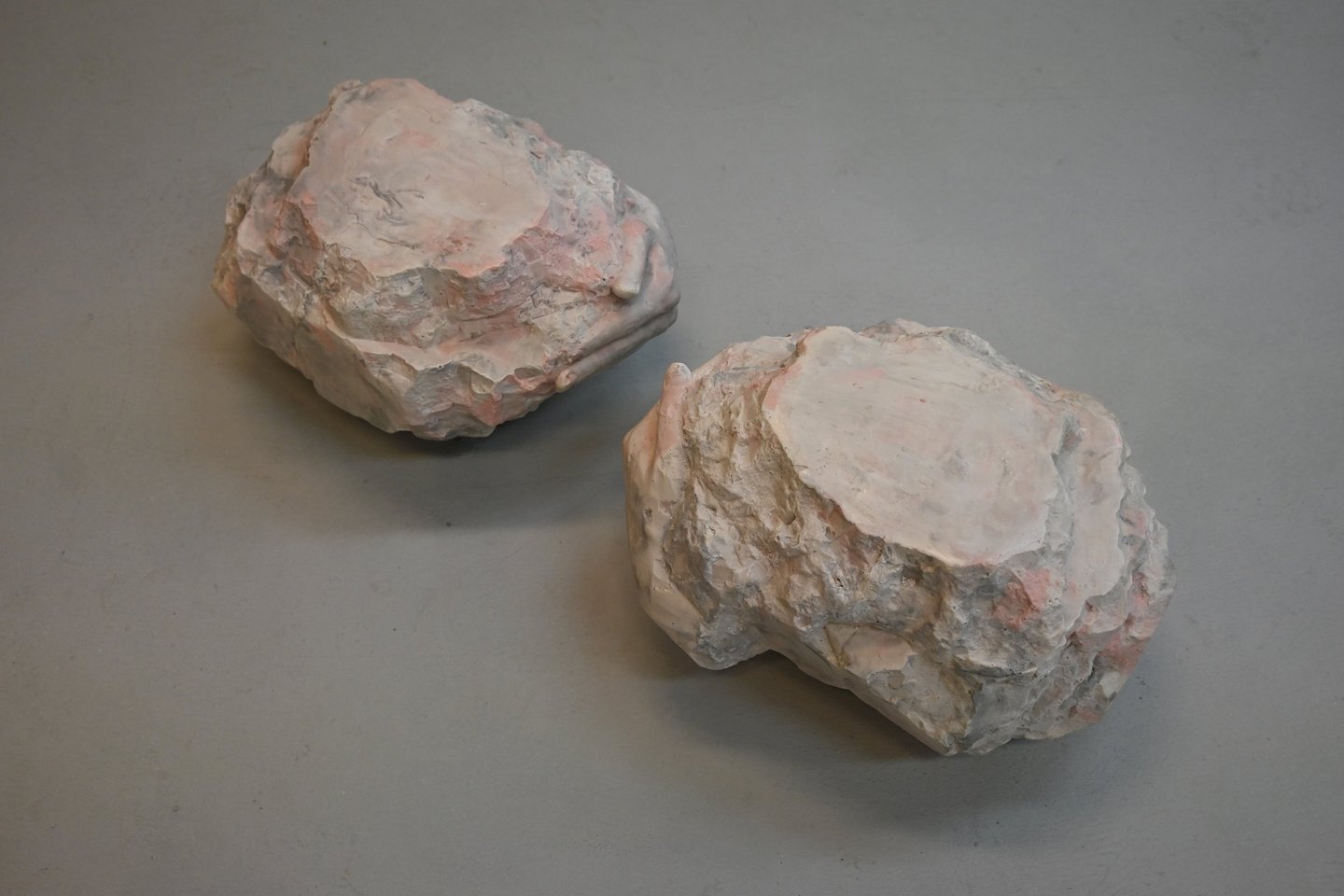"Language of Touch" is a body of work consisting of three sculptures and a printmaking piece.
The sculptures represent the importance of body language as a form of communication when two people do not share the same spoken language or when, for some reason, verbal communication fails, and we resort to our bodies to establish gestures or point, creating an intercorporeal connection. These pieces also acknowledge that such moments of communication and miscommunication generate a fiction between two bodies—one that is interpreted in an attempt to reach understanding. As expressed in the poem Not Waving but Drowning, sometimes we understand each other, while at other times, images or bodies are misread.
Similarly, the embossed prints present an alphabet in which each letter is formed by hands. Each letter is printed on paper, creating the illusion that it was made by the imprint of two hands pressing firmly onto the surface. In this way, hands once again become essential for grasping language, emphasizing that understanding does not rely solely on recognizing letters but also on feeling them. At the same time, this alphabet functions as a tool—a reminder of the possibility of learning a new language through touch.
Jesmonite and plaster
40 x 50 x 40 cm each
2024
27 Embossing on paper
38 cm x 56 cm each
2024
Español/
“Lenguaje del Tacto” es un cuerpo de obra que cuenta de tres esculturas y una obra de grabado.
Por su parte, las esculturas representan la importancia del lenguaje corporal como una forma de comunicación cuando dos personas no manejan el mismo idioma o por alguna razón somos incapaces de comunicarnos y recurrimos a nuestro cuerpo para establecer gestos o señalar, estableciendo una intercorporalidad. Estas piezas, al mismo tiempo, entienden que estas situaciones de comunicación e incomunicación generan una ficción entre dos cuerpos la cual se interpreta con el fin de en algún punto entenderse. Tal como expresa el poema Not waving but drowning, algunas veces nos entendemos y otras veces las imágenes o cuerpos se leen equivocadamente.
De igual manera, los gofrados presentan un abecedario en que cada letra está formada por manos. Cada letra está impresa en un papel, emulando la ilusión de que cada letra fué hecha con la impresión de dos manos presionando fuertemente el papel. De esta forma, las manos se vuelven nuevamente fundamentales para palpar el lenguaje, entendiendo que no solamente se entiende el lenguaje cuando se captan las letras, sino que cuando se sienten.
Al mismo tiempo, este abecedario se presenta como una herramienta, un recordatorio para aprender un nuevo lenguaje a través del tacto.
Jesmonite y yeso
40 x 50 x 40 cm cada una
2024
27 Gofrados sobre papel
38 cm x 56 cm c/u
2024
Lenguaje del Tacto, 2024
